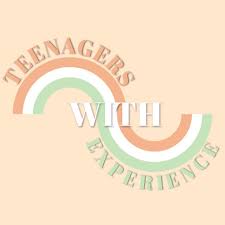|
Trigger warnings. Everyone with a mental illness who is on the internet has heard of them. A trigger warning (or content warning as it may also be called) is a short warning at the start of a social media post, photo, piece of art, TV show, advert or any other type of media that alerts the consumer as to what kind of content could be in that product. For example, you may have seen “TW: abuse, trauma” at the start of social media posts about the Amber Heard and Johnny Depp court trial, or “TW: suicide mention, drug abuse” at the beginning of TV shows like 13 Reasons Why. These are there so that if troubling topics upset you or trigger your mental illness or certain thoughts, you can either avoid the thing or you can proceed with caution. Many people have triggers, and there are so many. However, that doesn’t make them any less important or relevant. If someone sees triggering content then they could relapse, hurt themselves, be upset or just be uncomfortable. We at TWE make sure to know people’s triggers so that we can let them know of any triggering content in our movie nights, or our articles and social media. That way, our members and followers can avoid the content and protect themselves. TV shows like 13 Reasons Why have been in hot water over trigger warnings in the past. If you’re unfamiliar with the franchise, 13 Reasons Why is about a young girl who commits suicide and then leaves pre-recorded tapes detailing all of the reasons why she did it, intended for certain people to listen to. The show follows one of her friends listening to the tapes. The TV programme showed a graphic scene of Hannah’s (the protagonists) suicide, with very little warning. The warning that was there said that the content may be unsuitable for younger viewers. When the season launched on Netflix, social media erupted about how the gruesome scene triggered young people around the world who had mental health difficulties, and even contributed to some suicides, as they couldn’t get the image out of their heads. This shows the glaring importance of sufficient and informative trigger warnings. Since then, Netflix has removed the scene from the show, and now shows a video of some of the actors before the series telling viewers to watch with someone they trust, or don’t watch at all. The use of trigger warnings has thankfully been increasing, especially online. I personally try to use trigger warnings wherever I can, even if the topic isn’t triggering to me personally. If you do see something online that doesn’t have a trigger warning, you may feel upset, scared, or anxious. If you feel comfortable, message the owner of the content (or have a friend do it for you) and let them know that the content they posted is triggering and they may have upset many more people. Hopefully, the poster will add a trigger warning and remember in future. We are all human, and sometimes we forget things. If you do see something online that triggers you and you feel you may hurt yourself or someone else in any way, please don’t hesitate to tell an adult, a friend or call your local emergency number to get help. 999/111 in the UK 911 in the US Kat
0 Comments
|
Categories
All
|
|
|
Teenagers With Experience is an online organisation created to provide teenagers worldwide with an online platform to share their own experiences to be able to help, inform and educate others on a variety of different topics. We aim to provide a safe space to all young people. You can contact us via email, social media or our contact form.
|

 RSS Feed
RSS Feed
